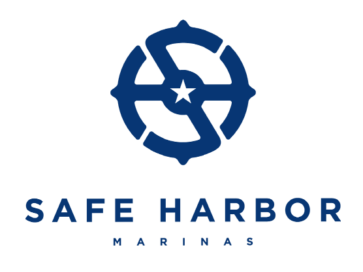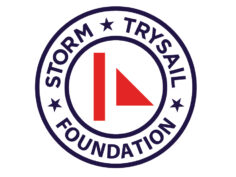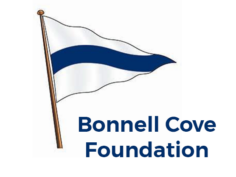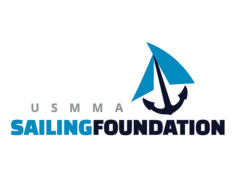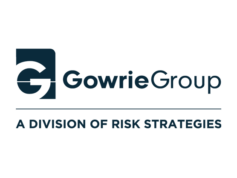The OSLS breakout groups and Organizing Committee developed over 50 specific recommendations for improving Safety-at-Sea training and education. These span a broad spectrum of Leadership skills. A synthesis of those recommendations, organized by how they might be implemented, follows. The complete recommendations can be found in Appendix 3. Implementing these recommendations will be a significant effort!
A. Improving Existing STC Offerings (Available to all clubs/organizers)
1. Junior SAS
Preparatory Work:
a) Provide access to the OSLS Leadership video and other support material; movie and book recommendations.
b) Coordinate with Long Island Sound Junior Sailing Association (JSALIS) to increase yacht club junior committees’ understanding of the value of big boat sailing and Leadership and expand Storm Trysail activities accordingly. Use this as a template with other regions.
At the Seminar:
a) Introduce juniors and their instructors to Leadership Responsibility and Practices.
i) Leadership session to discuss Leadership roles, responsibilities, essential characteristics, and best practices.
ii) Communication skills.
iii) Followership instruction (Be conscious of gender-bias when interacting with crew).
iv) Train the way you sail; sail the way you train.
v) STOP, THINK, EXECUTE.
b) Incorporate Leadership in Dockside Demonstrations and On the Water Practice. Define and rotate Leadership roles for each evolution.
c) Ensure we have female instructors/speakers/coaches.
d) Presentation by an inspiring sailor/Leader.
Post Seminar:
a) Continued access to Online resources: Video/PowerPoint/movie recommendations/real life stories.
2. Adult Hands-On SAS
Preparatory Work:
a) Required videos (OSLS video), articles, movies. (See Appendix 4).
b) Pre-Seminar Meeting: Pre-assign and announce Hands-On groups two weeks in advance of seminar. Assign a Leader and schedule a 45-minute Zoom: group introductions, brief prep video, short work assignment (watch bills for the SAS events). Assign a SAS Coach ‘mentor’ to guide this process.
c) Train STC coaches to teach Leadership.
At the Seminar:
a) Increased focus on Leadership, responsibility, accountability, essential characteristics, and best practices. (integrate into introductory session – possibly create a separate session in smaller groups).
b) Integrate practical Leadership into each lesson plan: rotate defined student Leadership roles for each session and drill, utilize benefit of the team Zoom, reinforce good communication skills, practice situational awareness, pre-briefs and de-briefs.
c) Integrate Bridge Resource Management; STOP, THINK, EXECUTE; Followership; Train the way you sail; Communication
d) Moderator focused wrap-up/guest "Leader"?
Post Seminar:
a) STC Pamphlet already has Moderator discussion of Leadership and other material. Add pages to cover the eight key aspects of good Leadership, best practices, "Tool Box" of further sources, emergency templates.
b) Quiz - add Leadership questions.
3. Level 200 Adult Hands-On SAS Training
a) Leadership training for advanced sailors who already have Hands-On Certification.
b) In-Depth session on Responsibility and Accountability.
c) Use of table-top exercises and on-the-water drills.
4. Intercollegiate Offshore Regatta
a) As teams sign up, send them link to OSLS Video and STC SAS library.
b) Prepare coaches/Owner reps: OSLS Video, coaches meeting, On Board check sheet (crew briefing, best practices)
c) Safety Briefing: include Leadership responsibility and best practices, followership, communication, “Train the way you Sail,” Stop-Think-Execute.
d) Post IOR communications to sailors with links to STC SAS library.
5. Block Island Race (and other Storm Trysail distance events)
a) In NOR provide the links to OSLS Video and SAS materials.
b) As Owners enter, provide links to OSLS Video and SAS materials, including templates for emergency bills (COB, Abandon Ship, Fire & Flooding). Offer a free review of station/watch bills if submitted to STC.
6. Block Island Race Week
a) In NOR provide links to OSLS Video and SAS materials; emphasize Responsibility to Provide Assistance.
b) As Owners enter, provide links to OSLS Video and the STC library for their entire crew.
c) At the “tent’ have Leadership and SAS resource information.
B. New Initiatives
1. Online (Web-based) Tools & Enhanced Website
a) Templates for Emergency and Crew Organization: Watch Bill; Abandon Ship, Fire & Flooding Bills, Emergency Stowage Diagram, Man Overboard, Damage Control Inventory, Damage Control Matrix, model/standard Situational Awareness planning and decision-making mental flowchart.
b) Template/Tools for Crew Practice Advice (how to run a drill) “Train the way you sail”. Include guidance on how to conduct pre-brief, debrief, & track completion. Race Organizers may want to tap into this. TOPICS:
i) COB: Upwind, Downwind, Night, Lifesling, Mid-line Lift, recovering COB at mooring.
ii) Emergency steering & damage control scenarios.
iii) Letterbox-style spinnaker takedown.
c) Potentially develop a Mobile App or Web Form for the above to both prompt discussion and capture lessons learned.
d) Incident Reporting: Incidents and Near Misses:
i) Template to record information.
ii) Provide links to Incident reports from World Sailing, US Sailing and MARS (Mariner Alerting & Reporting Scheme).
iii) Develop a sailing-focused non-attribution incident reporting platform for sailing – analogous to MARS.
e) Develop or Identify a Leadership Self-Assessment tool to learn strengths and weaknesses of Skipper & crew. Employ this in preparation for appropriate level SAS seminars.
f) Storm Trysail Video Library additions:
i) OSLS Video: full length and short versions (completed)
ii) OSLS Final Report
iii) Gary Jobson interviews with great sailors
iv) Rich du Moulin SAS Seminar moderator presentation
2. Bridge Resource Management
Develop educational and training content and/or module to translate Bridge Resource Management practices to managing a sailboat. This is explicitly using all the resources available to you at the moment, i.e., even listening to the most junior member of the team as he/she may see something no one else does, as recommended in the Panel Discussions from James Childs, Stephen Polk, and Todd Gautier.
3. Leadership Educational Programs
a) Zoom based presentations and guest speakers from STC and when appropriate, in cooperation with CCA, NYYC, US Sailing, others.
b) Tabletop exercises: integrate into SAS training both live and with Zoom. Example from Ralf Steitz: Mayday Crisis Management. https://drive.google.com/file/d/1UujJDgQHS2lDlSSH-auNAjJsE2BzIK9M/view
4. SAS On-the-Water Invitational Events
a) SAS Training Day: As boats register in advance, Skipper and crew automatically receive access to STC resources: OSLS and COB videos, emergency templates, and the SAS online library. STC provides recommended equipment list: reefable mainsail, storm jib and trysail, PFD/harness/tethers, jacklines, Lifesling, tallboy buoy, throw bag, personal AIS beacon.
Boats arrive with their regular crew. STC provides rotating onboard coaches, safety boats & coaches, video (handheld and drone).
i) Tasks: reefs, storm sails, emergency steering, heaving to, emergency communications (with coach boats), COB (tallboy/AIS) – possibly one trained swimmer as COB with Gumby suit.
ii) Zoom Debrief: mid-week with selected videos; run by moderator with support of coaches.
b) SAS Race Day: Box shaped course where boats do pursuit start (for separation), and must do X number of COB recoveries on a beat, reach and run, plus reefing, sail change to the storm jib, heaving to, and damage control maneuvers. Video from coach boats and mid-day Zoom debrief. On-water “Master of Ceremonies” and Judges to add fun and ensure correct performance of drills (reference “The Unregatta”).
c) SAS Weekend with Training Day followed by SAS Race Day: see (a) and (b) above; two-day event provides opportunity for party ashore including video and debriefs. Prizes for accomplishments (humor, best COB recovery, improvement, creativity)
d) SAS Overnight Cruise. Possibly as part of a Level 300 course; practice full-scope Leadership skills with a coached overnight cruise.
C. Regulatory Acceptance
Leadership Training Requirement
a) Based on actual experience with all the above ideas during 2021, for the winter of 2021-2022, consider formulating an effective "module" that could become the 16th requirement in World Sailing Offshore certification.
b) Work with US Sailing SAS Committee (Dick York) and Offshore Committee (Matt Gallagher) to have US Sailing lobby World Sailing (Oceanic Committee – Stan Honey) to adopt the proposed module as a new requirement. Also work with Gary Jobson, retired Vice Chair – World Sailing.
c) Alternative: in lieu of (a) and (b), consider integrating Leadership into the other 15 modules.
d) Build Leadership into the US Sailing Level II instructor training.

